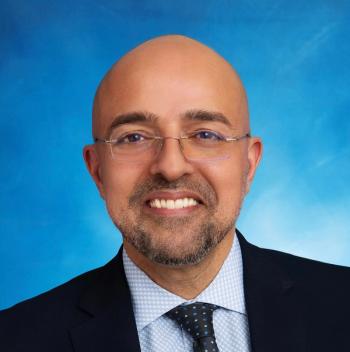
Kickstarting the Healthcare Transformation with 5G
How 5G can improve access to care and patient outcomes.
There are plenty of reasons to get frustrated with the U.S. healthcare system, whether as a provider or patient.
By many accounts, the system is
According to a recent Gallup Report, “nurses in the U.S. spend an extra 18 hours per week on administrative tasks and clerical workers spend an additional 37 hours,” compared to their Canadian counterparts.
At the same time, life-saving care remains out of reach for many people, including the 80% of rural Americans whom the federal government designates as
Fortunately, 5G technology has an important role to play in helping solve many of these problems. With its ability to support millions more devices at speeds up to 100-times faster than 4G, it will lay the foundation for new medical innovations that will improve access to care and emergency transport, diagnosis and surgery and post-hospital care.
Expanding Access to Primary Care
Modern medicine has led to tremendous improvements in quality of life and life expectancy, but these advances are for naught if patients can’t access them. Over the last decade, more than 150 rural hospitals in the U.S.
Primary care clinics are in equally dire straits, and specialists remain scarce. In Georgia, for example,
Telehealth can provide patients in medical deserts with the care they deserve, but many of these areas still lack reliable broadband. 5G networks will enable rural patients to connect remotely with providers around the country through crystal-clear video. Additionally, physicians will be able to monitor their patients remotely, as 5G-connected IoT devices—like wearables—will help them collect patients’ biometric data including weight, blood pressure, respiratory rate, body temperature, heartrate and more, to ensure that patients are responding positively to treatment regimens.
Transforming Emergency Response
When catastrophe strikes, quality emergency care can be the difference between life and death. This is especially true for the 30 million people
Traditionally, the model for emergency care has been patient-to-hospital, but in the coming years, 5G is poised to transform emergency transport, improving survival rates for those who cannot afford to wait. With 5G, ambulances can be transformed into WiFi-enabled smart vehicles and facilitate mission-critical communication. This will allow first responders to operate on a dedicated, secured part of the 5G network—just for them—that never gets clogged. So, EMTs outfitted with body cameras will be able to stream real-time 4K video of patients to specialists, who can guide them through best treatment practices.
Meanwhile, traffic lights supported by 5G networks will synchronize to optimize emergency routes to medical facilities. And IoT sensors will allow ambulance inventory to be monitored in real time, rather than require a manual logging at the end of each day. This network will give first responders the tools they need to bring hospital-caliber care to patients, wherever and whenever.
Improving Diagnostics and Surgical Outcomes
Artificial intelligence (AI) is rapidly becoming an indispensable part of hospital infrastructure. Already, AI diagnostic tools rival human physicians in accuracy, and deep-learning algorithms will only grow more intelligent in the coming years. By 2022, an estimated
5G networks will be at the heart of this boom, feeding AI algorithms the data required to function and improve, and enabling VR clinical trials, hyper-accurate biometric data collection, precision surgery and advanced diagnostics.
Reimagining Post-Hospitalization Care
While there are many direct healthcare applications of 5G, next-generation networks will also work indirectly, accelerating the pace of innovation across the board. Already, clinical trials are underway to develop novel therapies using AR, VR and biofeedback to meet longstanding deficits in long-term care. Researchers around the world are finding new ways to use these technologies for non-narcotic pain management, treatment of PTSD and chronic anxiety and substance abuse counseling.
These methods show promise, offering therapies that are more effective and less costly. But many trials are held back by the limited speed, latency and capacity of 4G and Wi-Fi networks. Soon, 5G will break down these barriers and unleash a new wave of innovative treatments.
The Promise of 5G
From traditional hospital settings to makeshift EDs in ambulances to the comfort of our own homes, 5G is poised to change healthcare as we know it. Together with the advent of machine learning and the proliferation in IoT-enabled sensors, this next-generation network will improve to better the entire healthcare ecosystem with solutions that decrease inefficiencies, improve experiences and outcomes, increase engagement and reduce costs for providers and patients alike.
About the Author: John Curtis, MBA, is the vice president of sales at Samsung.
Get the best insights in digital health
Related







































